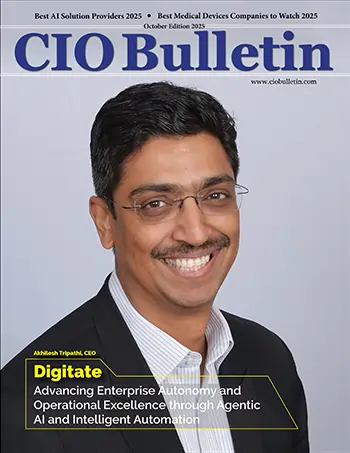CIO Bulletin

Today’s power grid isn’t what it used to be, as more companies in the industrial and commercial settings want to produce their own power to help control costs and environmental impacts. The rise in distributed energy resources allows users to supply their own power, especially in remote locations where they may not have been able to reach the traditional power grid. These are not mutually exclusive categories. As more companies move toward energy independence, it is possible to incorporate sustainable elements into today’s grid, while also future-proofing for what’s to come. Generating energy from renewable resources certainly helps a company move toward energy independence. The intermittent nature of renewable energy means there has to be access to a firm power source. The most critical developments won’t come in the form of hardware or wiring. AI and machine learning will be the most critical components of a sustainable energy infrastructure, especially as these technologies can anticipate (and remediate) issues across the grid and individual microgrids. I believe there will be a series of microgrids in the near term, which will have fallback and failsafe options that rely on other grids. We live in a world where close to 2 billion people do not have access to reliable energy sources. This access is essential in lifting countries and communities out of poverty. Simultaneously, the world is facing a growing climate crisis with GHG emissions being a significant contributor to global warming. BluWave-ai formed in 2017 around the idea of bringing innovations in artificial Intelligence, edge computing and cloud-based super-computing to the world of distributed renewable energy.
Benefits for utilities
Electrical output from renewable energy sources like wind and solar fluctuates and is inherently difficult for utilities to manage. This results in renewables generation often being under-utilized, with operators relying on fossil fuels as a fallback. BluWave-ai’s grid energy optimization platform balances the cost, availability, and carbon footprint of different energy sources – both renewable and non-renewable – with energy demand in real-time. The goal of BluWave-ai is to drive the transition from a centralized, carbon-based energy model to the point where clean energy can be produced by almost anyone, anywhere, aided by advanced real-time computing to optimize its generation and use. The United Nations has identified 17 sustainable development goals. BluWave-ai's work aligns with several of these goals, including Sustainable Development Goal (SDG) 7, to ensure access to affordable, reliable, sustainable and modern energy, as well as SDG 9, to build resilient infrastructure, promote sustainable industrialization and foster innovation. BluWave-ai has been recognized by Valuer for its contribution to both SDG 7 and SDG 9.
EV everywhere
BluWave-ai products enable lower operational costs and emissions for utilities, and effectively mitigate the operational risks related to distributed energy resources (DERs). In addition, BluWave-ai’s solution helps balance utility-scale generation and storage with demand, tackling peak smoothing in systems with high renewable penetration. The benefits: reduced net energy costs, increased use of renewable energy and lower harmful emissions. The increased adoption of electric vehicles (EVs) in residential areas introduces challenges for distribution utilities who supply the increased energy demand to charge them. The utility needs to plan the infrastructure to manage the increased capacity and find non-wires alternatives to mitigate peak loads so it can avoid costly capital upgrades. BluWave-ai’s EV Everywhere solution eases the transition to high urban EV penetration. The increased adoption of electric vehicles (EVs) in residential areas introduces challenges for distribution utilities who supply the increased energy demand to charge them. The utility needs to plan the infrastructure to manage the increased capacity and find nonwires alternatives to mitigate peak loads so it can avoid costly capital upgrades. BluWave-ai’s EV Everywhere solution eases the transition to high urban EV penetration. Building on BluWave-ai’s distributed artificial intelligence (AI) SaaS platform, EV Everywhere uses anonymized smart meter and other network metering data to identify instances of EV charging and predict loads at the substation feeder, local loop and transformer level.
AI Model Training and Simulation
Meet the leader behind the success of BluWave-ai
Devashish Paul Founded BluWave-ai after an extensive career in the semiconductor industry focused on supercomputing, artificial intelligence, and networking. He is a life-long cyclist and nature enthusiast using human powered energy for personal transportation to explore the world. Devashish founded the company combining his interest in clean energy technologies with advanced computing and networking technologies. During his 20+ years in the tech world, Devashish has led successful innovations in a diversity of markets at Canadian start-ups, Toronto Stock Exchange-listed, and Silicon Valley public companies, most recently at Integrated Device Technologies as Director of Strategic Marketing. He has grown businesses in Europe, Asia, and North American from the startup level to $110M annual revenue. In industry leadership roles, he ran the High Performance Computing Group in the Open Compute Project (started by Facebook) to create open industry computing platforms for low-latency workloads. Devashish also served as an advisory board member for the CERN OpenLab.
“BluWave-ai's distributed, AI-enabled platform optimizes the operation of smart grids, microgrids and electric vehicle (EV) fleet charging installations, and increases the use of renewable energy sources.”







